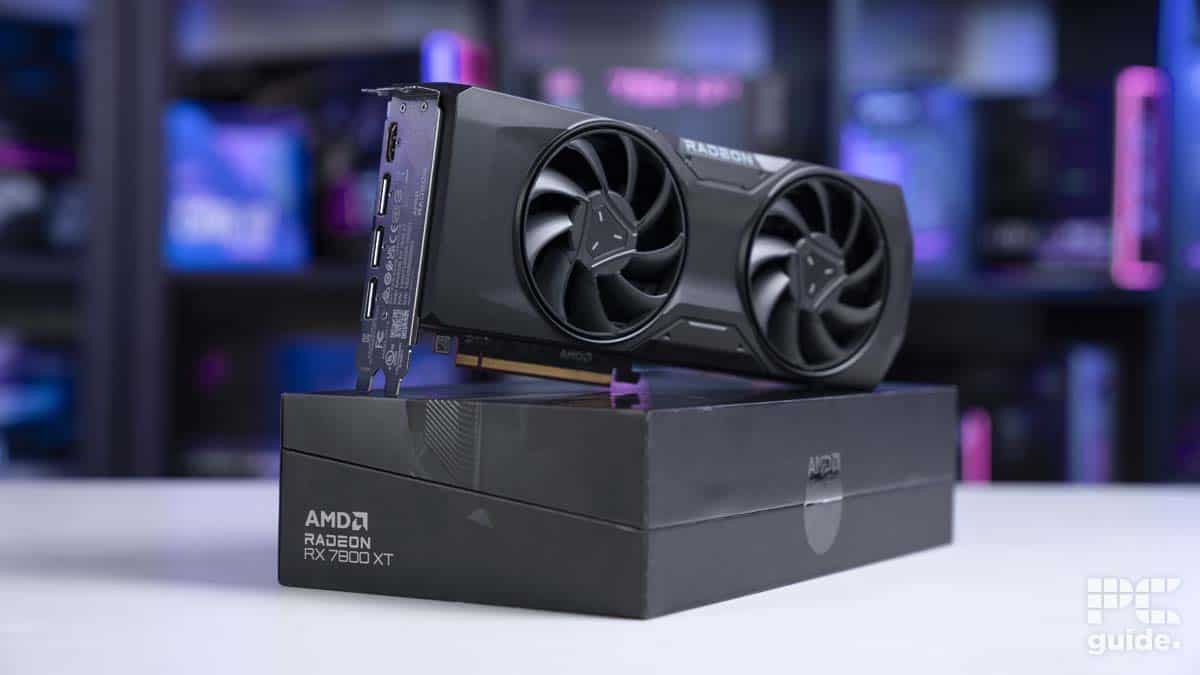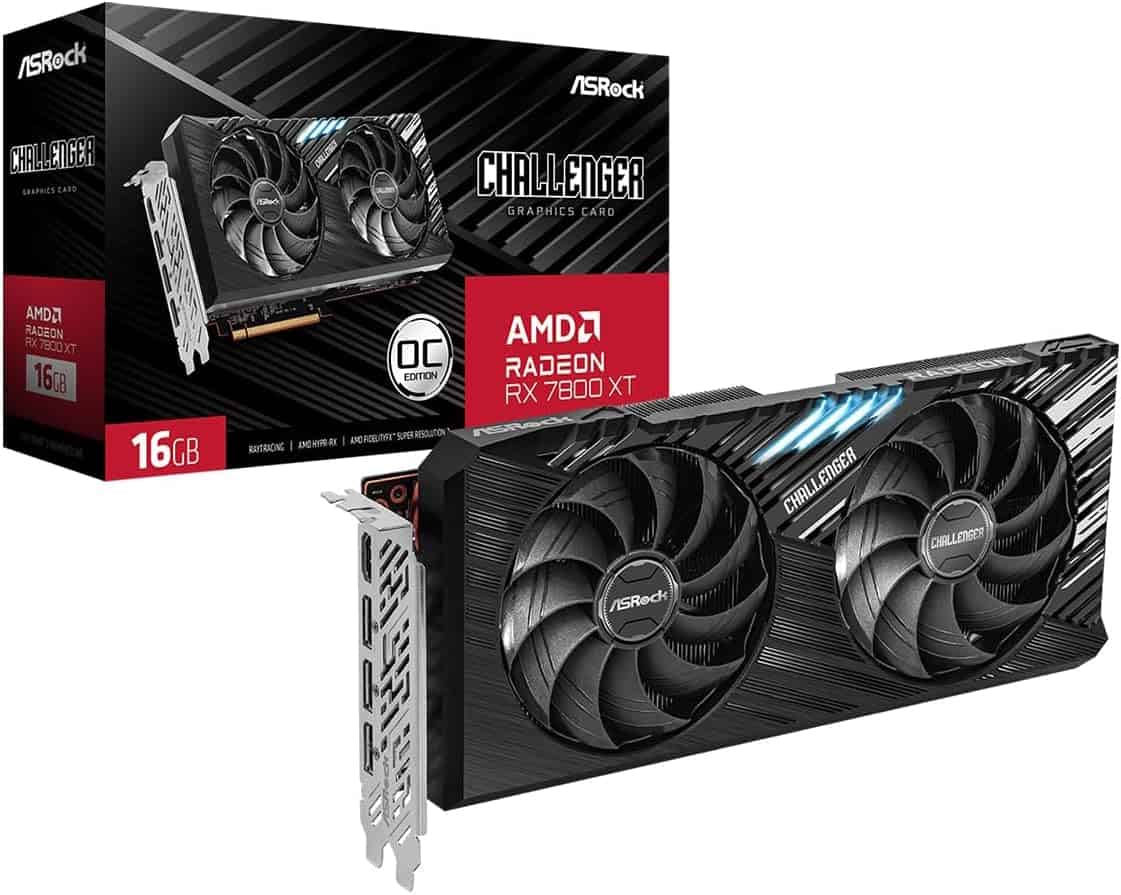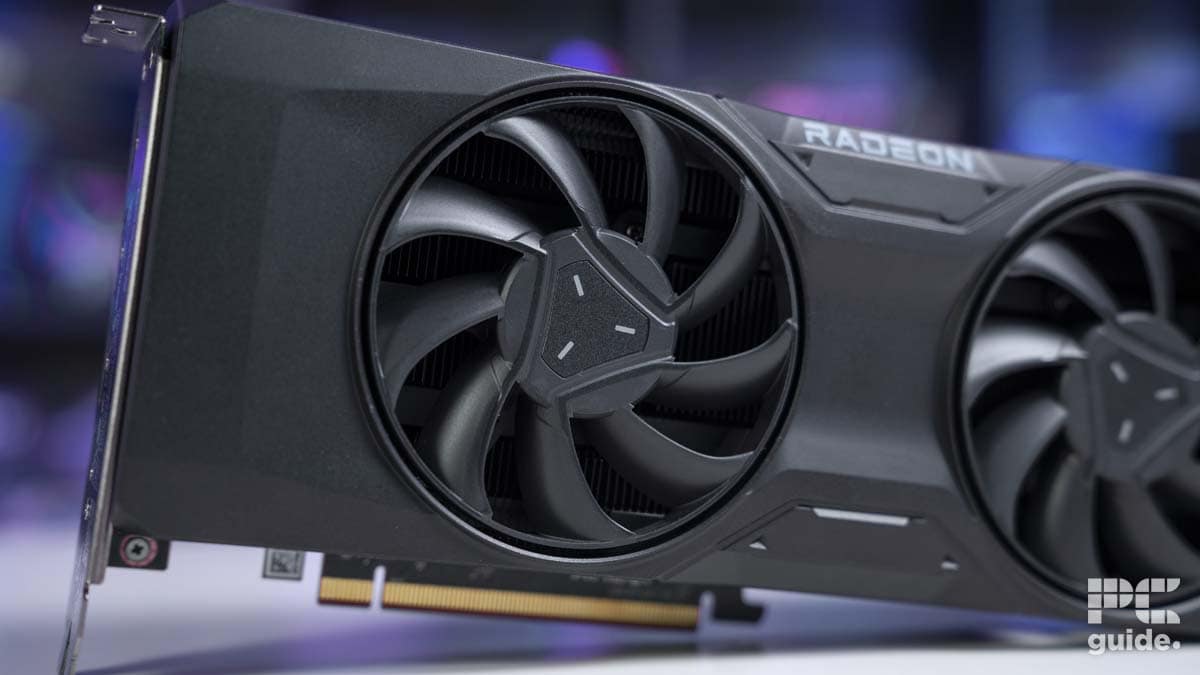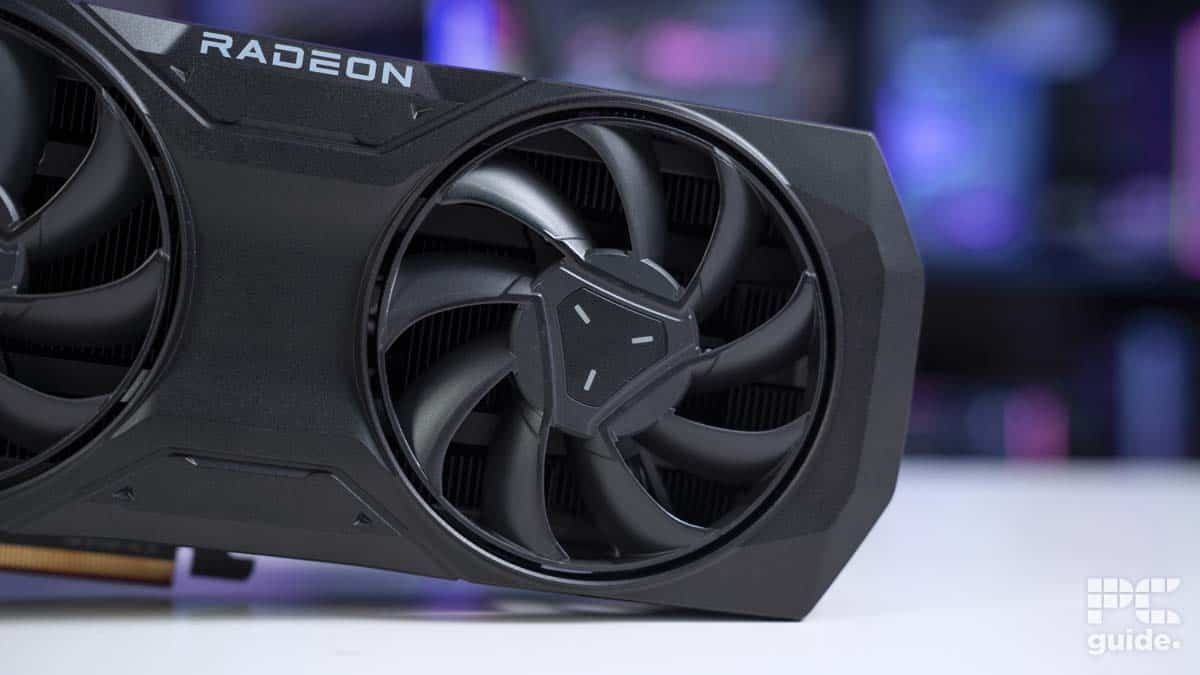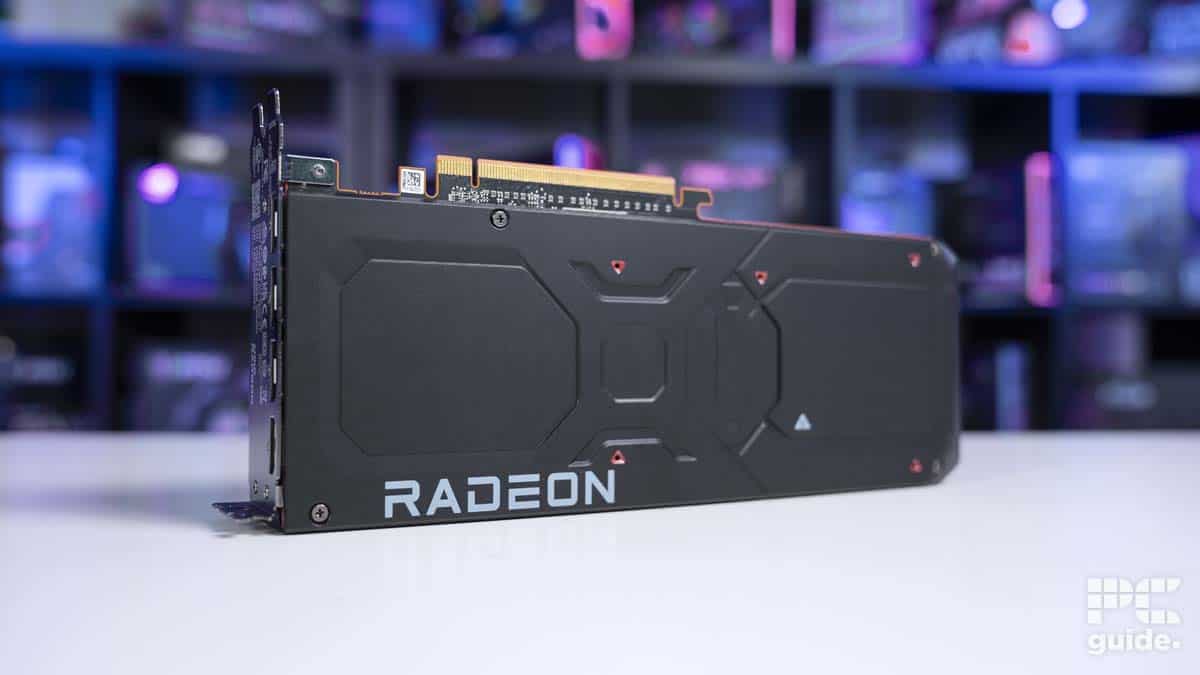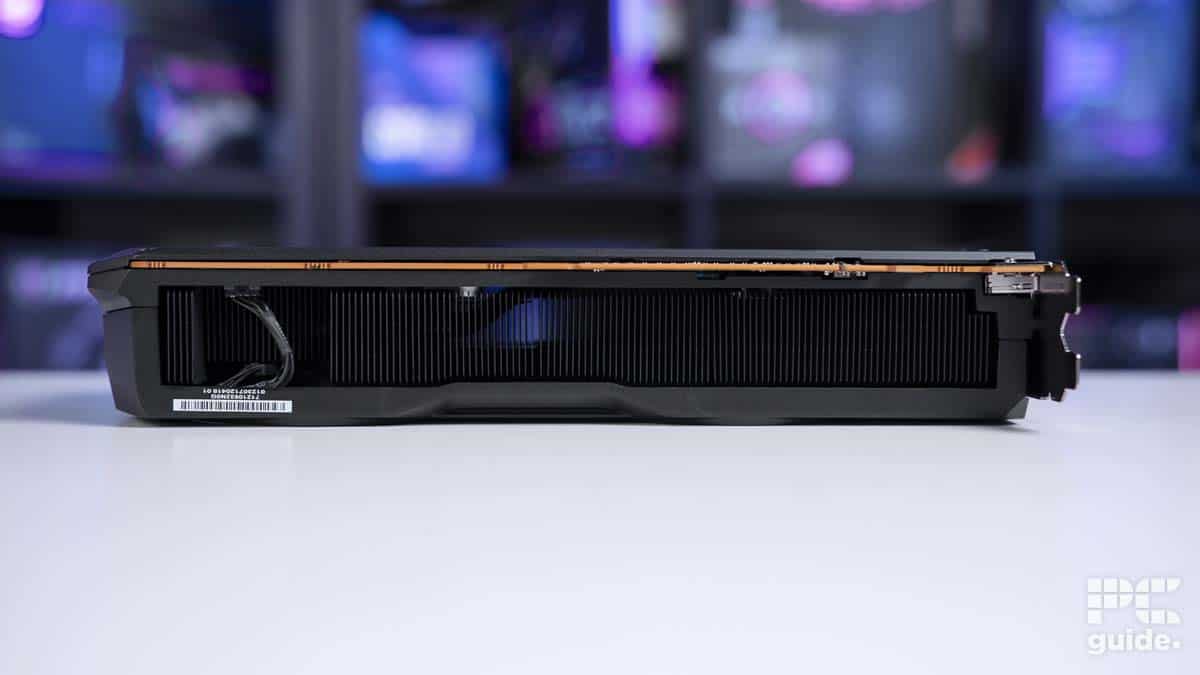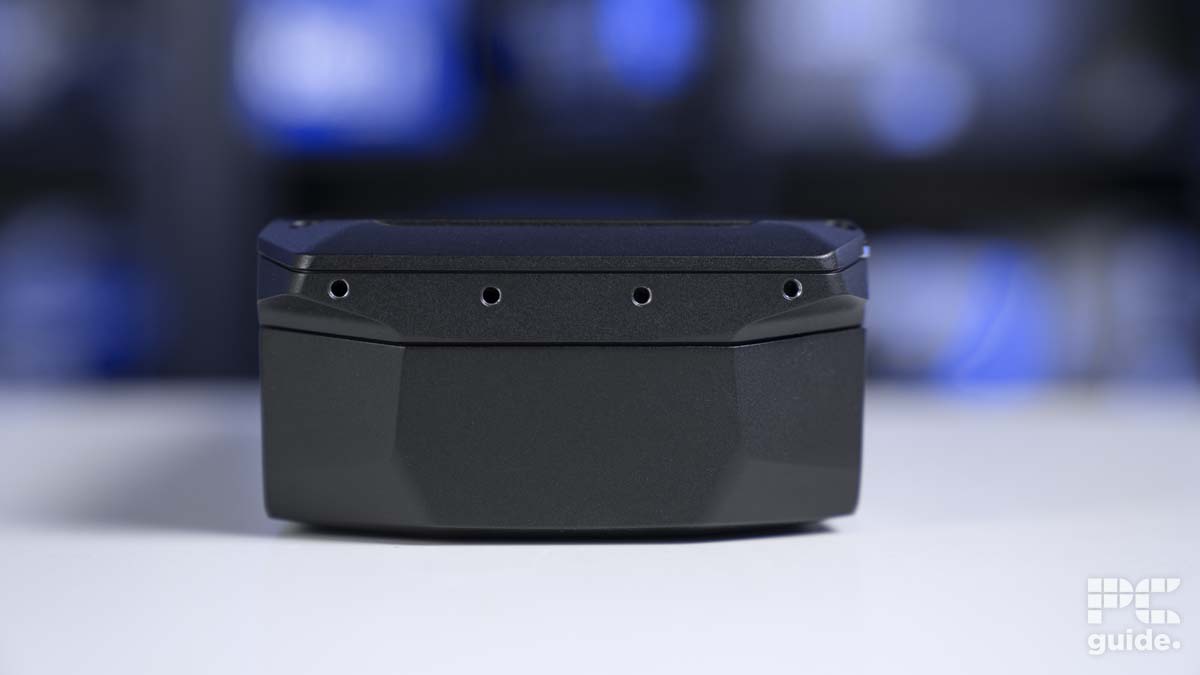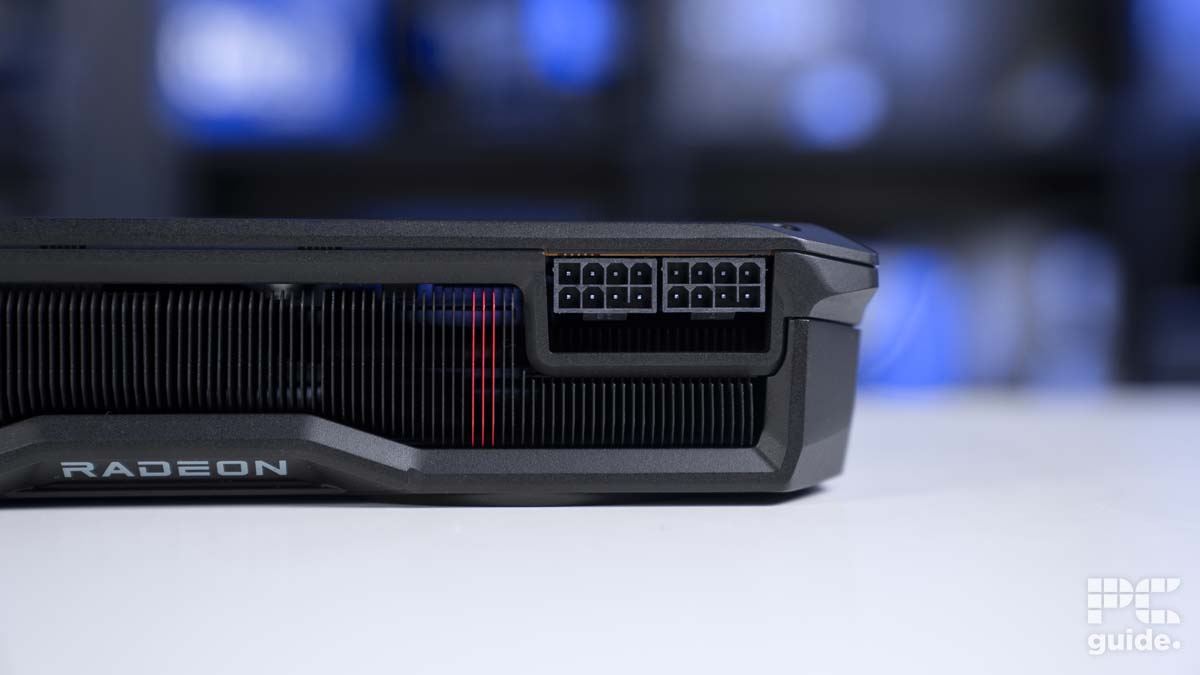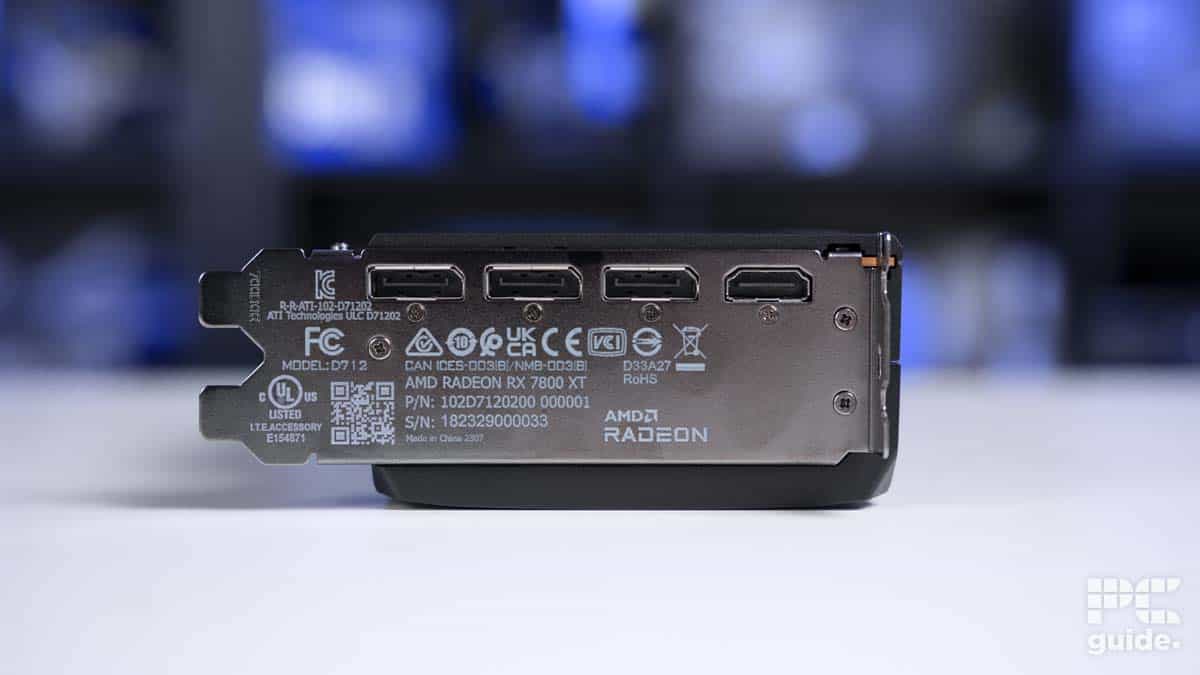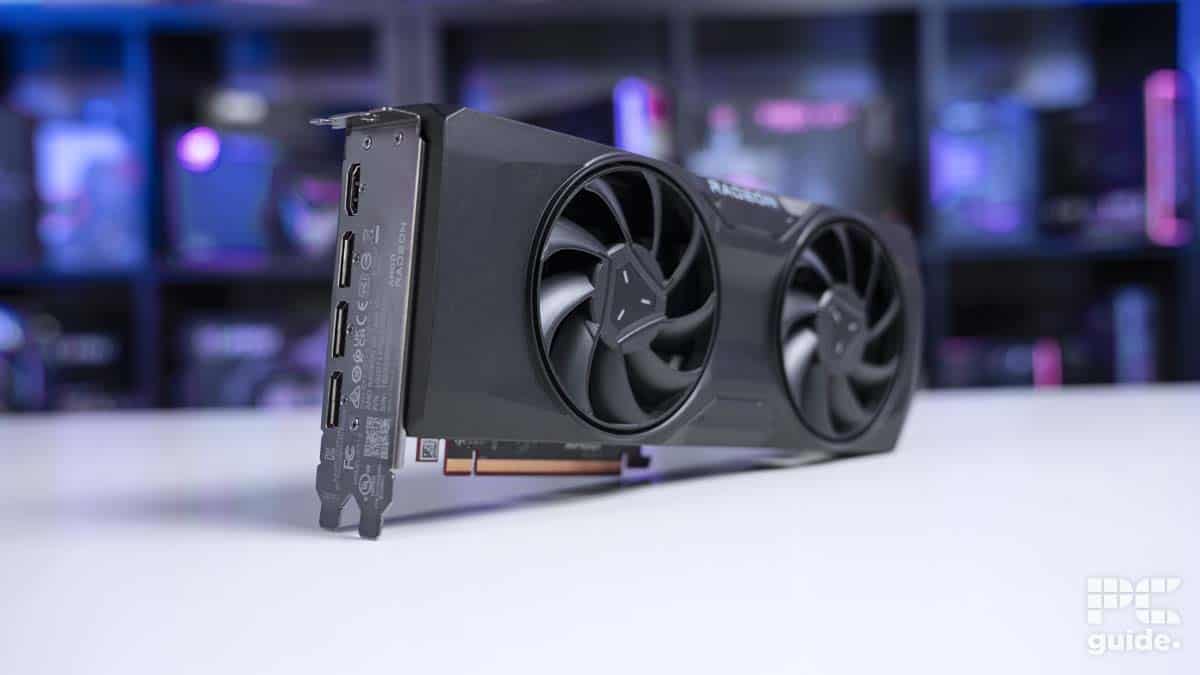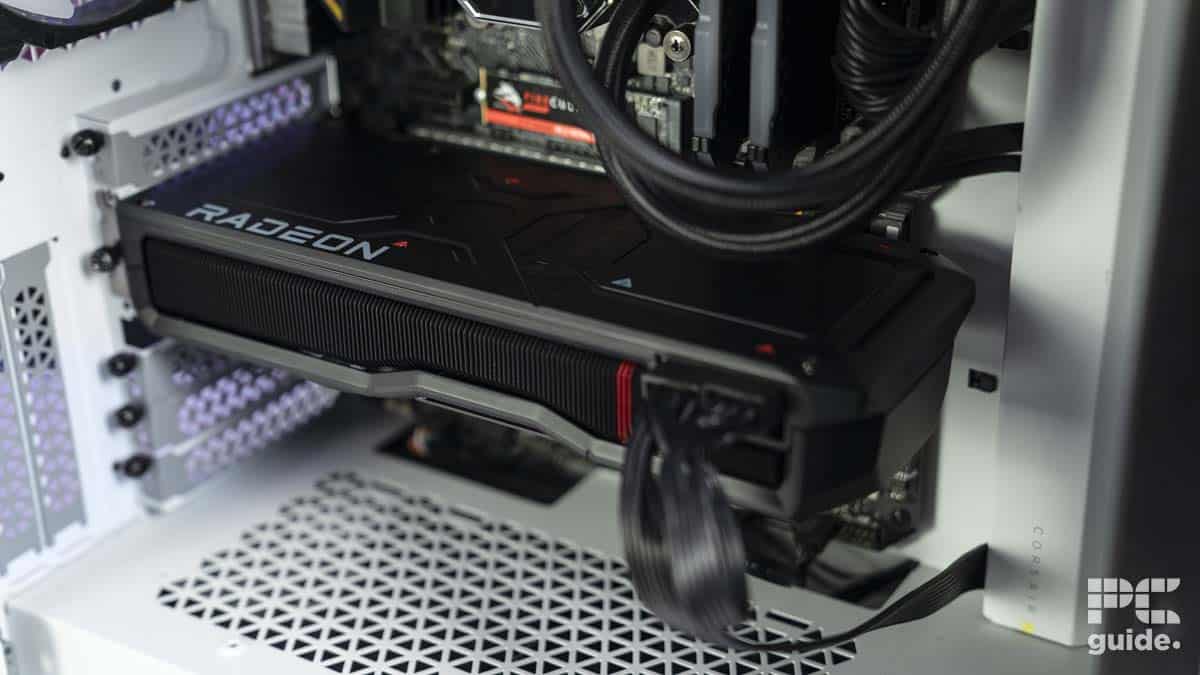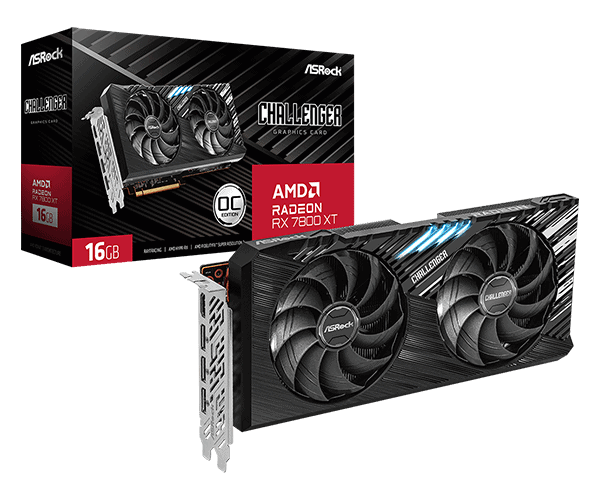Best RX 7800 XT GPU in 2025 – our top picks
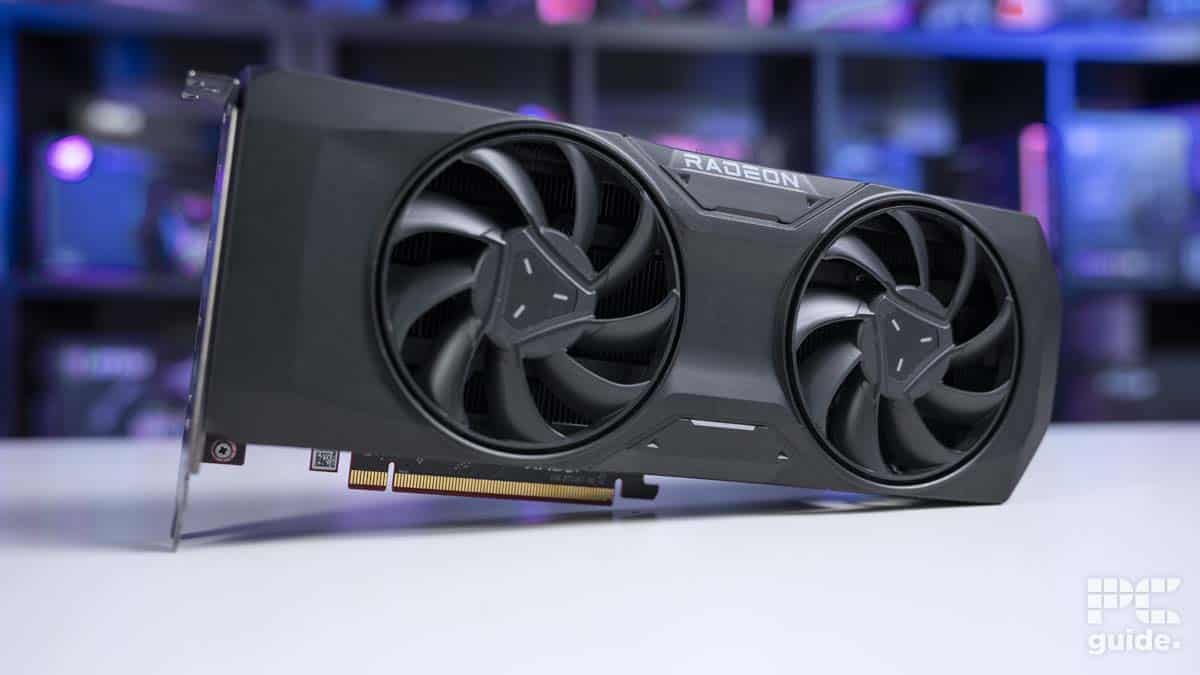
Table of Contents
Here are our thoughts on the best RX 7800 XT models. We'll be going through all options based on their use cases, design, pricing, and more to help you make an informed purchasing decision. For starters, we adore this GPU and think it's one of the best graphics cards available. For the full details, you can read our full AMD Radeon RX 7800 XT review.
The AMD’s card in question made a thunderous entry into the mid-range market, with critical acclaim echoing throughout the tech community. Following the positive feedback this GPU generation has received, we present an insightful guide to help you identify which variant best suits your needs.
Prime Day is finally here! Find all the biggest tech and PC deals below.
- Sapphire 11348-03-20G Pulse AMD Radeon™ RX 9070 XT Was $779 Now $739
- AMD Ryzen 7 7800X3D 8-Core, 16-Thread Desktop Processor Was $449 Now $341
- ASUS RTX™ 5060 OC Edition Graphics Card Was $379 Now $339
- LG 77-Inch Class OLED evo AI 4K C5 Series Smart TV Was $3,696 Now $2,796
- Intel® Core™ i7-14700K New Gaming Desktop Was $320.99 Now $274
- Lexar 2TB NM1090 w/HeatSink SSD PCIe Gen5x4 NVMe M.2 Was $281.97 Now $214.98
- Apple Watch Series 10 GPS + Cellular 42mm case Smartwatch Was $499.99 Now $379.99
- ASUS ROG Strix G16 (2025) 16" FHD, RTX 5060 gaming laptop Was $1,499.99 Now $1,274.99
- Apple iPad mini (A17 Pro): Apple Intelligence Was $499.99 Now $379.99
*Prices and savings subject to change. Click through to get the current prices.
While there's not too much gen-on-gen improvement in terms of rasterization performance over the AMD Radeon RX 6800 XT, this GPU offers a variety of features not available from its predecessor. Overall, its AI accelerator cores can power more advanced AI workloads, such as upscaling, as well as better ray tracing performance. If you're interested in investing in this card, we've outlined some of the best models of the 7800 XT for you here.
-
Best RX 7800 XT Overall
AMD Radeon RX 7800 XT
- GPU: Navi 32
- Stream Processors: 3,840
- VRAM: 16 GDDR6
- Memory bus width: 256-bit
- Bandwidth: 624.1 GB/sec
- Base clock speed: 1,295 MHz
-
Best budget RX 7800XT
ASRock RX 7800 XT Challenger OC
- GPU: Navi 32
- Stream Processors: 3,840
- VRAM: 16GB GDDR6
- Bandwidth: 624.1 GB/s
- Memory bus width: 256-bit
- Base clock speed: 1397 MHz
-
Best RX 7800 XT for overclocking
GIGABYTE Radeon RX 7800 XT OC
- GPU: Navi 32
- Stream Processors: 3,840
- VRAM: 16GB GDDR6
- Memory bus width: 256-bit
- Bandwidth: 624 GB/sec
- Base clock speed: 2254 MHz
How we selected
Our methodology for selecting any GPU is a fusion of rigorous testing, user feedback, and industry benchmarks. By putting each card through a series of performance evaluations, we gauge its real-world efficiency, stability, and overall experience. Heat management, noise levels, and power draw are just a few of the specs we examine closely.
Furthermore, beyond the technical metrics, we factor in the reliability and reputation of the manufacturer, post-purchase support, and warranty conditions. The community's voice is invaluable; hence, user reviews, experiences, and feedback are integral components of the decision-making process.
On the whole, AMD is looking to dominate the mid-range GPU market with the release of the 7800 XT and the slightly cheaper 7700 XT. With support for its latest FidelityFX Super Resolution (FSR) 3, as well as increased rendering power from the underlying RDNA 3 architecture, the card is a fantastic choice for gamers looking for a GPU upgrade that provides 1440p frame rates without breaking the bank. It stands out as an alternative to other market favorite cards, such as the NVIDIA Geforce RTX 4080, despite not having the favorable DLSS.


- GPU: Navi 32
- Stream Processors: 3,840
- VRAM: 16 GDDR6
- Memory bus width: 256-bit
- Bandwidth: 624.1 GB/sec
- Base clock speed: 1,295 MHz
- Triple, 13-blade fans should result in good cooling
- It has dual BIOS for continued operation
- It has 8-phases dedicated to solid power distribution
- It might require a support bracket to help with GPU sag
- It needs a large PC case
For our top pick, we have the XFX Speedster RX 7800 XT that we've reviewed in-house and were pleased with its performance.
This GPU features 16GB of GDDR6 RAM, a base clock of 2124 MHz, and a boost clock of 2430 MHz. It also has a 256-bit memory interface width and a memory clock of 19.5 Gbps. Given these impressive specifications, it’s no surprise that it performed well during our gaming tests and managed 91 FPS at ultra settings in Cyberpunk 2077, a demanding title.
The XFX Speedster card features a triple fan and aerodynamic design, which should ensure maximum airflow and efficient cooling. On top of that, each fan has 13 blades, meaning the overall structure of the fan should have more endurance, resulting in an increased lifespan. Besides that, this fan design should also make less noise, meaning an overall quieter build.
If you're an enthusiast looking to overclock the GPU, this power design should enable you to overclock it without worrying about power issues.
PC Guide
Regarding its power distribution, XFX ensured that the GPU gets the right amount of power and dedicated 8 phases out of the 14, which should ensure stable power distribution. So, if you're an enthusiast looking to overclock the GPU, this power design should enable you to overclock it without worrying about power issues.
On the other hand, if you like the performance with the base clock speeds, you should experience lower temperatures due to efficient power distribution. Lastly, the XFX Speedster GPU comes with dual BIOS. What this means is that this GPU should work in the unfortunate case of a BIOS update failing or becoming corrupt, ensuring action-packed gaming or productive sessions.
What users say
According to Amazon reviews, this card is a “beast in every which way possible,” and users are more than happy with their purchase. One reviewer said: “I mostly play GTA 5 and i get 120 frames per second on average at 1080p very high settings and it stays cool and the highest I have ever seen the temperature was 65 degrees Celsius.”
- It has plenty of features to ensure cool operation
- It comes overclocked by the manufacturer
- Elegant LED lights enhance its visual appeal
- Dual-fan design can reduce the cooling capabilities of the card
For the more budget-conscious out there, we have the ASRock variant of the GPU in question, which costs, $502.89 at the time of writing.
The ASRock card Challenger has a game clock of 2169 MHz and a boost clock of 2475 MHz. These values are slightly higher than the base specifications, and to be exact, it has a 45 MHz faster game clock and boost clock. This means it comes overclocked from the manufacturer and should result in slightly better performance, but it most likely won't make that big of a difference.
That said, you always have the option to overclock it and take its performance to the next level. However, remember that this card features a dual fan design, meaning the fans will have to work harder to keep it cool, which can result in GPU whine. According to ASRock, this card has 0dB cooling, but that might not be the case for varying scenarios, especially under heavy loads.
It comes overclocked from the manufacturer and should result in slightly better performance.
PC Guide
On top of that, it has various design elements to keep it running cool, like a metallic backplate and robust heat pipes to help dissipate heat better and efficient metal welding to minimize the gaps and ensure efficient thermal dispersion.
It also features a glass fabric PCB, which protects the card from short circuits due to humidity by minimizing the gap between the layers. Lastly, it has four LEDs, which enhance its overall look without relying too much on the RGB factor, giving it a sleek and minimalistic look.
What users say
The ASRock RX 7800 XT Challenger reviews praise its quiet performance and small form factor. One reviewer said: “Smaller footprint than other 3 fan models but I’ve seen no difference in performance.”
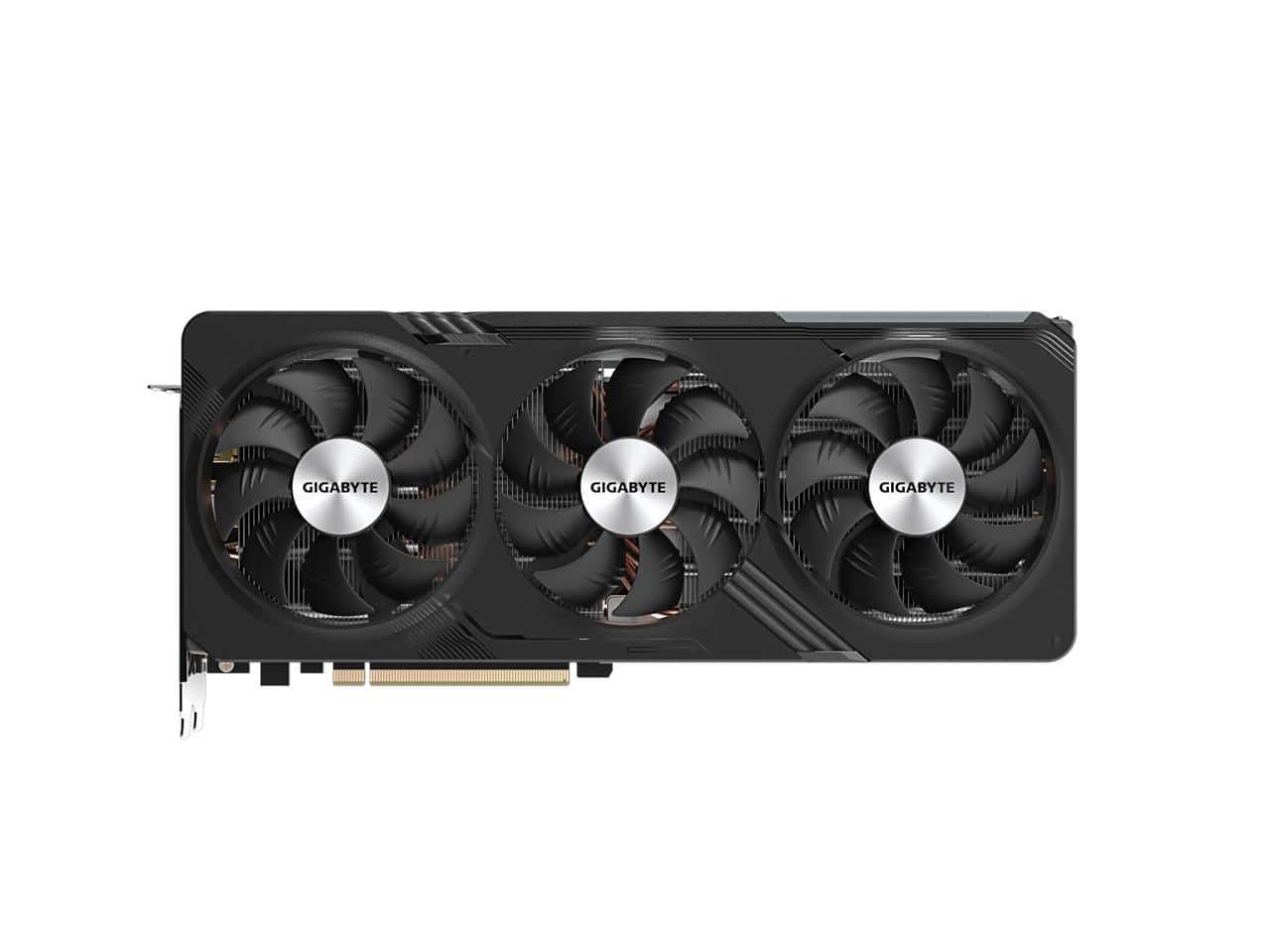
- GPU: Navi 32
- Stream Processors: 3,840
- VRAM: 16GB GDDR6
- Memory bus width: 256-bit
- Bandwidth: 624 GB/sec
- Base clock speed: 2254 MHz
- Boost clock speed: 2565 MHz
- Excellent overclock settings from the manufacturer
- 3D Active fans detect the load and adjust their operations
- Great thermal design
- Requires a large PC case to be housed comfortably
- Some reviewers complained about the card crashing due to drivers
Not everyone wants to overclock their components for the best performance, but for all the enthusiasts out there, the Gigabyte’s card might be right up your alley.
This GPU comes with overclocked settings with a game clock of 2254 MHz and a boost clock of 2565 MHz. For reference, the base settings are 2124 and 2430 MHz, respectively. So, this GPU has a 130 MHz faster game clock and a 135 MHz faster boost clock. On top of that, you have the option to tweak the frequencies further and squeeze out every bit of performance from the card.
It has a triple fan design with alternating spinning fans to further assist the overclocking potential, which should increase the overall airflow and promote better cooling. On top of that, the 3D active fans should ensure quiet operation by remaining off during idle or low loads and kick in when heavy processing is detected. And the best part is the graphene nano lubricant used to prolong the fan’s lifespan and help it operate seamlessly.
The Gigabyte card also features a large copper plate positioned directly on top of the GPU chip, which ensures efficient heat transfer to the heat pipes.
PC Guide
That said, this means it is also large in size, with dimensions of 302mm x L, 130mm x W, and 56mm x H (11.8” x 5.11” x 2.2”). So, before making a decision, ensure your PC case has the capacity to house it while leaving space for adequate airflow. If you're interested in checking out some options, we recommend our best airflow PC case guide for the top picks.
The Gigabyte GPU also features a large copper plate positioned directly on top of the GPU chip, which ensures efficient heat transfer to the heat pipes. The 90mm unique fans handle the rest.
Lastly, it has good accessibility features, like two power indicator lights on top of the connectors. This should come in handy in scenarios where the PC isn't booting, and you need to check every component individually and ensure they are working properly and getting enough power.
What users say
According to Amazon reviews of the Gigabyte RX 7800 XT, it has excellent performance, and one reviewer said: “Absolutely crushes everything I’ve thrown at it,” while another stated: “You can feel confident in cranking up all settings to highest settings possible at 1440p; you’ll end up having a blast.”
How to pick the best RX 7800 XT
Selecting any variation of the same card might seem simple, but there are some factors you need to consider that can help you make an informed decision and invest your money wisely. We've listed some of the factors below.
Brand
There are tons of third-party manufacturers out there, and each puts its own twist on the card, such as some level of overclocking, RGB lighting, unique fan design, and more. However, certain brands are more favored than others, like ASUS and EVGA, which are considered top-tier manufacturer, but their cards also cost more. However, brands like Gigabyte and even ASUS TUF cost less but deliver excellent performance.
So, we recommend going for tried and tested brands as they generally have good customer support, but always read the reviews on Amazon, Best Buy, and any other platform you prefer and check for their after-sales support.
Fans
Depending on the ambient temperature of your region, the base temperature of your GPU will automatically increase, meaning its fans will have to work more to keep it cool. Having more fans means they can spin at a lower RPM while achieving the same cooling result as dual fans would at a higher RPM, which also results in more noise.
So, if your budget and PC case allows for a triple-fan variant, it’s always the preferred option.
Budget
This is the most important factor you need to consider. Always operate within the budget you've set and go for the best option that you can afford. While more RGB and other accessibility features have their appeal, they also hike up the price. That said, even if there is little to no RGB, the base components are the same, and you should get the same performance, which, at the end of the day, is all that matters.
Is the 7800 XT overkill for 1440p?
Simply put, no. The GPU is geared entirely towards high-end 1440p gaming, even being billed as the “ultimate 1440p upgrade” by AMD.
Is the RX 7800 XT a high-end GPU?
Strictly speaking, no. The RX 7800 XT is technically a mid-range GPU in terms of performance, being most confident in 1440p with lighter 4K application. In comparison, the RX 7900 XT and RX 7900 XTX are the high-end RDNA 3 graphics cards.


